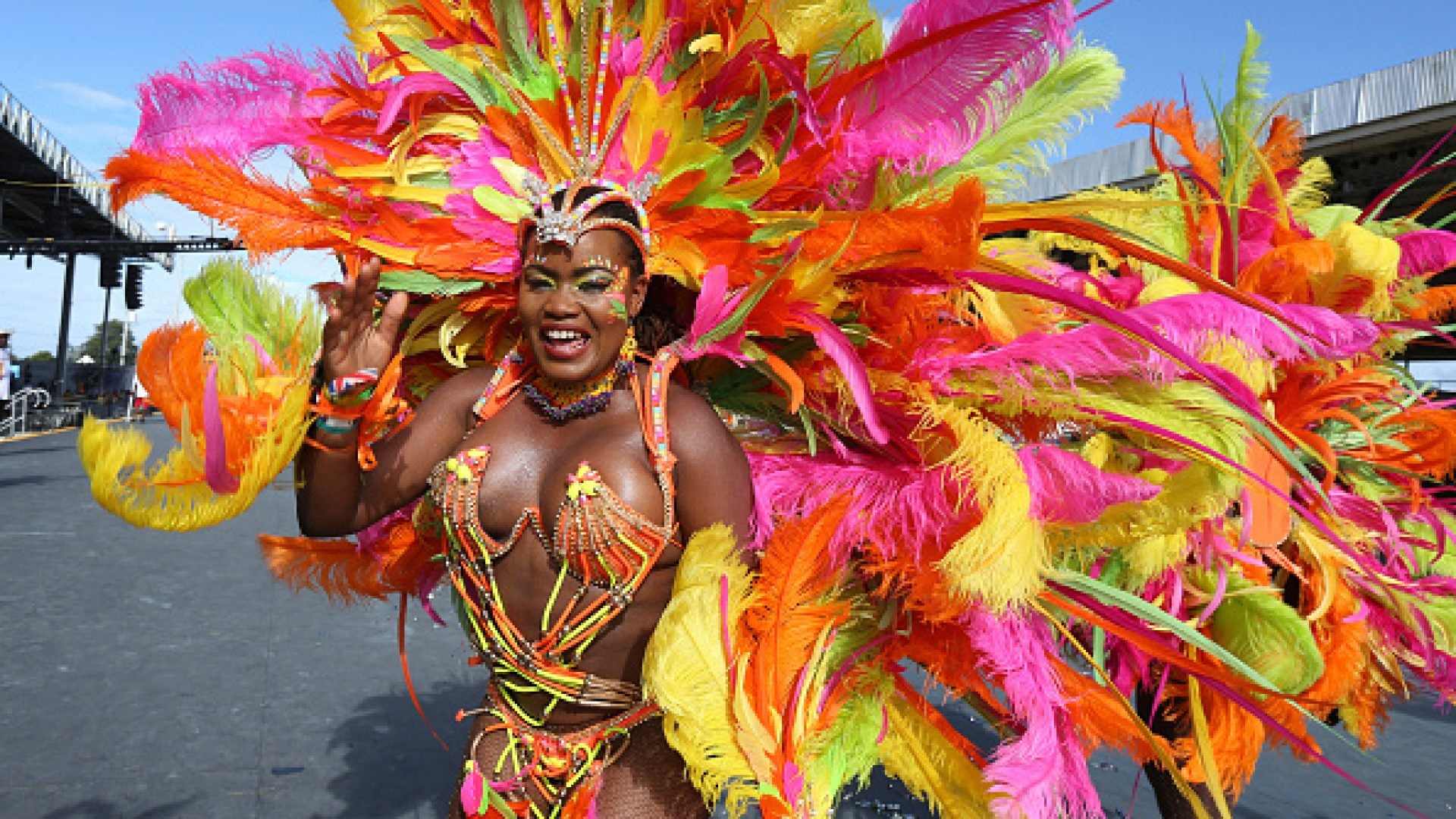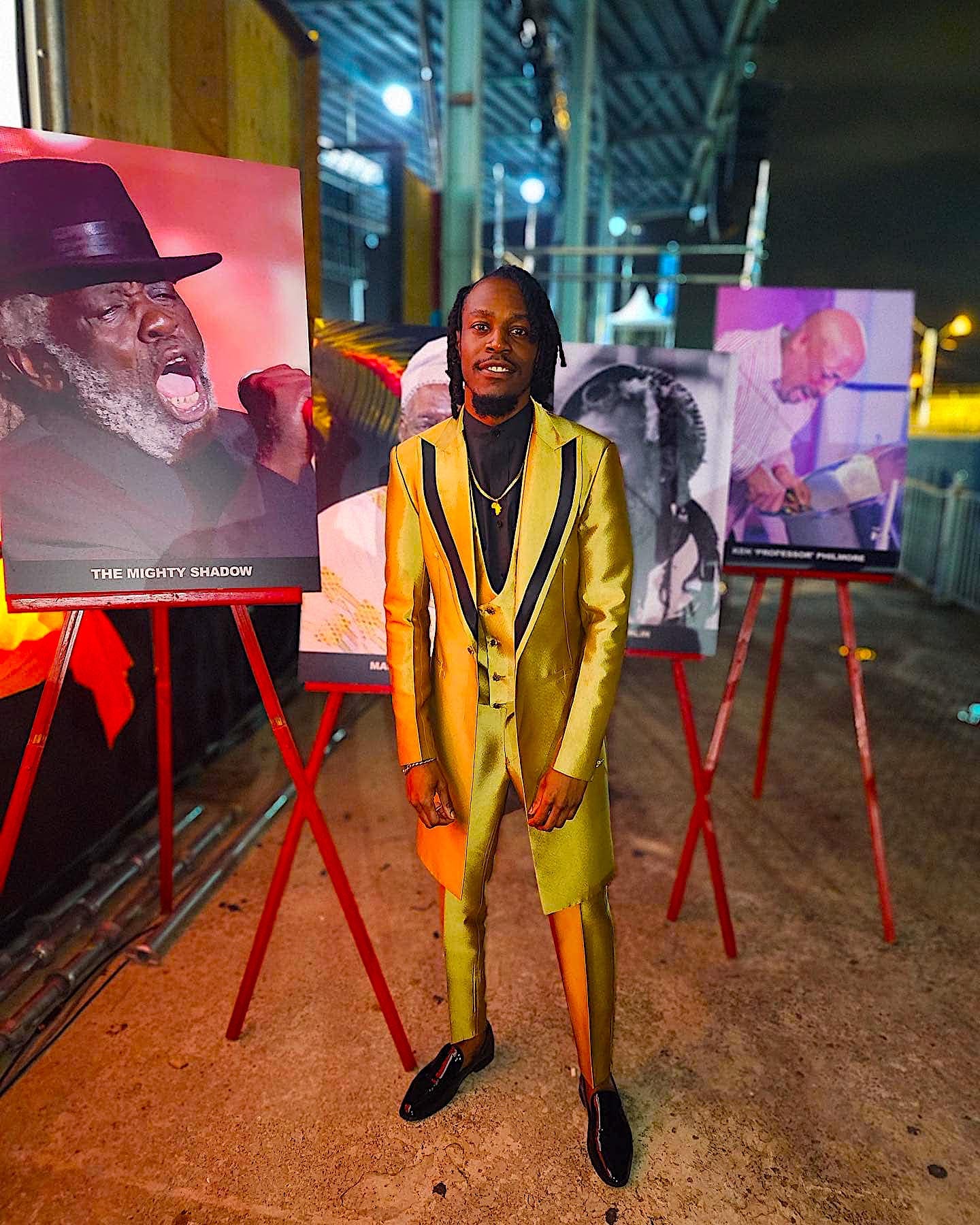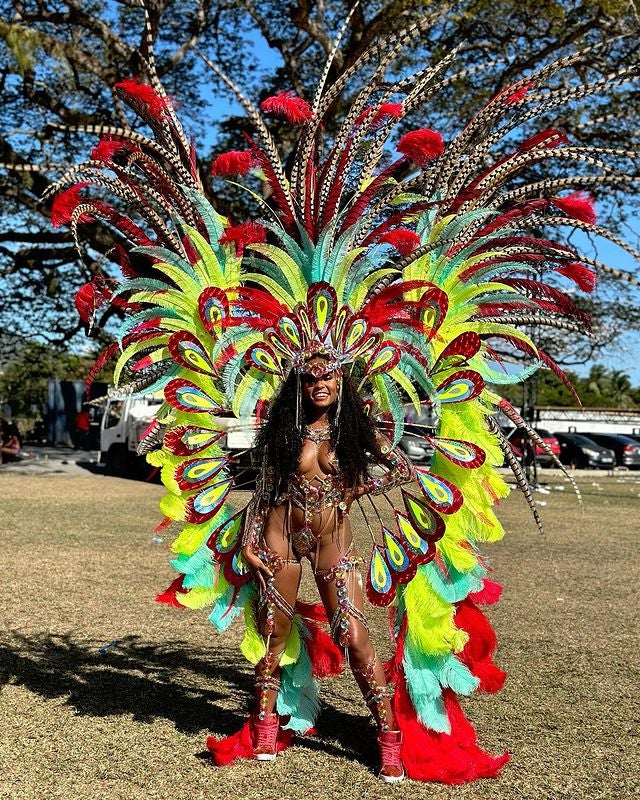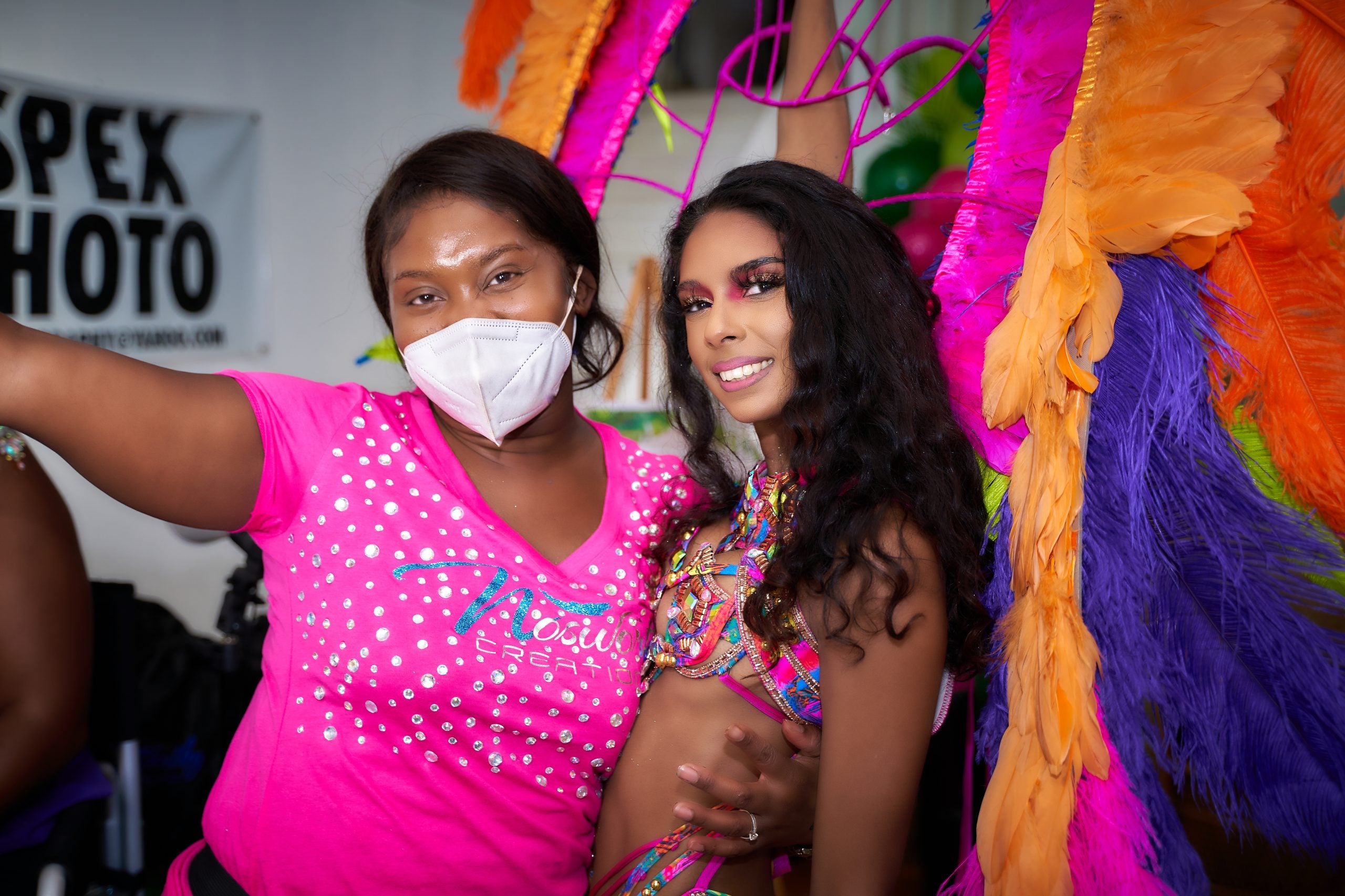
PORT OF SPAIN, Trinidad– Looking out at the thousands of people gathered on Fantastic Friday, aka Carnival Friday, for a soca concert in the middle of Hasely Crawford Stadium evoked a deep sense of joy and euphoria in me.
Walking through the crowd waving my flag and reuniting with friends and my fete family as some of the biggest stars of the soca genre took to the stage reminded me of the power of soca music and the spirit of the carnival season, which is unity.
Then I heard Mical Teja start to sing the lyrics of his hit song “Hall of Fame,” and the crowd (myself included) sang along almost in unison. “Doh worry lover. Doh worry friend. Doh worry partner. You go see ting again.”
As Teja raised his right hand in the air and everyone started swaying left to the right, we continued singing along, “We time coming back again. Is so much meh heart could take. I feel like I born again. Freedom at last. Raise your glass, woi. Cya live in de past so. Look fah we!”

Those lyrics perfectly capture the feelings of so many who had been waiting with bated breath to celebrate the big return of Carnival in its birthplace of Trinidad and Tobago. Aptly known as the “Greatest Show On Earth,” the twin-island republic’s annual celebration, rooted in resistance and a celebration of freedom, was absent for two years due to the COVID-19 pandemic. Its return marked the comeback of a critical industry with an impact that touches just about every sector of society.
“Carnival is very, very important because what it does goes beyond just economics. Yes, it creates a livelihood for many people. But it also raises the spirits of people as well in the country,” Teja tells ESSENCE. “If you watch during carnival time, you could see that for the whole year a man could be moving like it’s whatever, but when that carnival bug starts to come in, you see a different level of productivity, and productivity drives the economy. So you know, it intersects on a real deeper, spiritual level as well too. So it does a lot for us,” adds the singer and songwriter, often referred to as the artist with the hottest pen game in soca.
Although typically marketed and viewed for its entertainment value, Carnival is one of Trinidad’s most valuable exports, playing a pivotal role in tourism and employment. It’s a valuable global ecosystem that employs thousands of people locally and internationally.

For veteran makeup artist Deandra Caesar, booking clients during Carnival in Trinidad as well as across the Caribbean region is critical to sustaining her livelihood. “Carnival is one of my biggest incomes. So without Carnival, when COVID happened, 50 percent of my income was gone, says the Miami-based makeup artist and founder of Nosworthy Creations. She partners with the local business Body Ethics Spa annually to meet the high demand for makeup and spa services.
Between Carnival Monday and Tuesday, Caesar and another artist on her team worked from 2 am to 2 pm and served about 50 clients in one-hour intervals. They also made house and studio calls to clients who were hosting and attending events in the week leading up to Carnival’s culmination.
“Carnival day for us is like a Super Bowl. This is our biggest day in the year,” she tells ESSENCE with excitement.

The Carnival season, which runs from the beginning of January until Ash Wednesday, generates the largest inflow of visitors to Trinidad. In fact, the run-up to Carnival, which is usually counted as the three-week period leading up to Carnival Monday, brings in 10 percent of Trinidad’s total visitor arrivals for the entire year, according to Tourism Trinidad Limited, the destination marketing company for the island.
“That’s critical to understand, because it means that in a short space of time, you find that people are coming in droves. And people are going to come with foreign exchange, they’re going to spend their money. The musicians, the hairdressers, designers, the makeup artists, you know, these are the persons that benefit from Carnival,” says Tourism Trinidad CEO Carla Cupid.
Carnival also means employment for sound and lighting businesses, hospitality workers, food service providers, security, event planners, tour operators, as well as everyday vendors who sell clothing, crafts and other items.
“So there’s a depth to Carnival when you talk about economic benefits,” Cupid says. She also noted that the pandemic meant they had to find new ways of engaging and sharing the culture of Carnival with people worldwide. According to Cupid, Tourism Trinidad expanded its participation in global travel trade shows as well as their online presence and access to digital content so that important cultural connections could still be made whether someone could travel to Trinidad or not.
“What we’re really working on doing is taking what we have at Carnival in this concentrated time and expanding and extending that throughout the 365 days of the year because we’re always in season, Carnival is always in season for us,” she adds.
Cultural connections are important to carnival stakeholders like DJ Jel, who is known as the soca boss. “As the stakeholders of Carnival, we have to be cognizant and also teach people and have a level of preservation for our culture,” he says.
DJ Jel shared his disappointment at the cancellation of the annual International Soca Monarch competition, which is typically a major cultural event and platform for younger artists of the genre.
“We are the Mecca of Carnival. We as the leaders who created this International Soca Monarch…I think we didn’t take into account how much people are watching what we do and our influence in the world because in other Caribbean countries, soca monarch is a staple. It’s what people look forward to in St. Vincent, Barbados, Grenada, Antigua. So for us to kind of disregard something that we had, it should have never been that way,” he says.
While many carnival stakeholders say they value the strides made, they want to see better access to Trinidad’s carnival product, because the costs to attend can be prohibitive.
Expenses such as flights, accommodations, costumes, fetes, transportation and food can cost upwards of $5,000 and yes, we’re talking US dollars. Many travelers who made plans for this year’s festivities faced sticker shock when the cost of just obtaining flights into the country from places like New York and Miami were coming up over the $4,000 mark.
Trinidad carnival 2023 was widely touted as the “Mother of all Carnivals” but whether due to sticker shock or working out the kinks after a two-year absence, these stakeholders say some adjustments are needed for it to reach its full potential.
“We have got to fix our infrastructure, we have to make sure that we have enough accommodations for people. They have to get cheaper flights. And if we don’t do that, we’re going to restrict ourselves. You know, basically, people will want to go to other carnivals and fetes and try those where there are more affordable options,” says Adrian Scoon, Co-Founder of WOW Events, which hosts popular carnival events like Soaka Street Festival and Soca Brunch.
DJ Jel agrees and says he hopes to see Tourism Trinidad and the Ministry of Tourism, Culture and the Arts work more closely together to attract more influencers, thought leaders and stakeholders into Carnival and also show “the world who we are while protecting our traditions in the process and not losing who we are.”
To create a more seamless carnival experience with more affordable party options, Scoon and business partner Rudy Charles introduced a new concept called HAEVEN this year. It gives an all-access pass to seven different carnival parties for $699.00. Attendees just simply scanned an RFID band for event entry.
“I feel like us event producers, we have to give them a platform for them to be able to come and enjoy themselves easily. We have to use technology so that it makes our Carnival much more palatable and easy for them and customer service friendly,” says Scoon who shared that HAEVEN will offer flights as a part of its carnival packages for next year.
These stakeholders say that overall, 2023 was the year of recalibration for the carnival ecosystem and they are confident that Trinidad carnival will continue to grow with some changes.
“I think this year, we needed to get readjusted. I believe in 2024, we will start seeing more people coming. I really believe that this was a launchpad for a very strong five to 10 years of growth,” adds Scoon.
“This may not have been the mother of all carnivals, but it was the carnival that we needed,” says DJ Jel.





